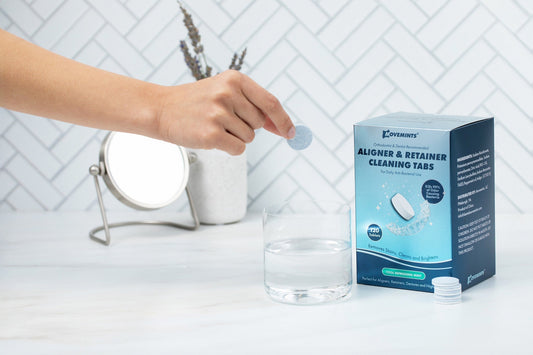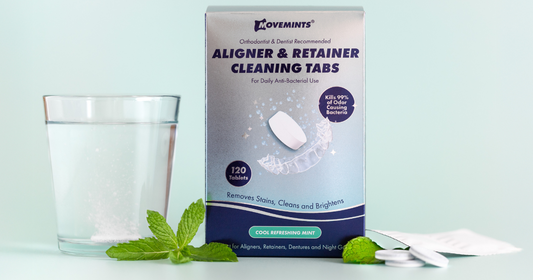Want Great Results with Clear Aligners? Plan for Invisalign Refinements
You may be thinking...if invisible braces work so well, what would make a procedure like Invisalign refinements necessary? Simply put, your mouth is not a computer simulation and things don’t always go according to plan. Even with advanced teeth scanning machines and 3D printing technology, the journey to your perfect smile can be unpredictable.
So if you are planning to straighten your teeth with invisible braces and want to achieve your ideal smile, prepare yourself for the possibility that minor corrections to your treatment may be required. Even if you receive your invisible aligners in the mail from an at-home provider, you can request corrections during the smile journey. However, these changes may not be free, so here are some tips on maintaining the journey and finishing on schedule.
The Difference Between Invisalign Refinements and Mid-Course Corrections
Generally speaking, the difference depends on when the refinement trays are added to your treatment. If it’s at the end, it’s a refinement. When Invisalign refinements are necessary at the end of your treatment, your orthodontist or provider creates a new series of trays to continue moving your teeth into their ideal position. Since the process of digitizing and creating new trays involves time, effort, and material, your provider may charge additional amounts for refinements.
Mid-course corrections are refinements that occur before your aligner treatment is complete. Let’s say you are three months into the process and discover you have a tooth that isn’t tracking well, which means it isn’t moving according to schedule. This can result from a tray not being tight enough to move teeth (which fails to create the optimal orthodontic force for tooth movement) or trays being too tight and crowding the teeth (meaning they won’t have room to move).

When your teeth aren’t moving on schedule, mid-course corrections are used to get you back on track. However, it isn’t as simple as exchanging one tray cycle and keeping everything else the same. Mid-course corrections require an entirely new sequence of trays to be designed, from the point of correction through the end of your smile journey. Refinements, as mentioned, require additional clear braces to be added to the end of your planned treatment.
Read More: How do I know when I need mid-course correction or refinements
Why Are Invisalign Refinements or Mid-Course Corrections Necessary?
Even if you are a perfect patient, the convenience of the clear aligner lifestyle is ironically what leads to mid-course corrections or refinements. The ability to remove your clear braces introduces a variable that neither you nor your provider may control, and the trade-off for this freedom is that your teeth may not move exactly as planned.
When you wear plastic trays for 22 hours each day, it will alter your routine, from the way you eat and drink to how you care for your teeth. Patients report their bite feels different, which can take some adjustment, and that pain levels spike early in a tray cycle. These challenges may deter you from sticking to your optimal clear aligner routine.
If you develop bad habits or deviate from your provider’s recommendations, you’re pretty much guaranteeing that you’ll spend additional time in treatment, and even worse may pay out of pocket to get back on track.
Read More: Why are My Teeth Not Tracking?
But changes to your treatment schedule are sometimes due to individual differences, or a more complicated teeth straightening case. Overbites and underbites are treated differently, and there's no guarantee your teeth will move exactly according to plan. This is especially true given the flexibility patients have when straightening their teeth with invisible aligners.
As a practicing orthodontist specializing in Invisalign therapy, I marvel (along with my patients) at the amazing results we see early in treatment. But as we journey closer to perfection, teeth don’t always track in accordance with our 3D teeth scanner simulations. Corrections get us back towards the finish line, and quickly thanks to rapid advancements in 3D printing technology.
Techniques to Minimize the Need for Refinements or Mid-Course Corrections
Almost every orthodontic professional will tell you that following the exact prescription of our smile plan is the best way to stay on track and avoid the need for mid-course corrections during treatment or refinements at the end of your treatment. That can be easier said than done, but it is sound advice nonetheless. So what are some ways you can adhere to your optimal clear aligner treatment routine?
Keep Track of Your Clear Aligner Wear Time
The recommended daily wear time is 22 hours a day, every day. This is what it takes to achieve your ideal smile, end of story and no exceptions. But how can you be sure you’re actually meeting that 22 hour per day recommendation? We are big fans of TrayMinder, a free smartphone app developed by a practicing orthodontist that helps patients track daily wear time and remember when to change to a new set of trays.
Try "Backtracking" to your Last Tray
Wearing your clear braces for 22 hours a day is critical, but you’ll want to make sure your trays fit correctly because when trays aren't fitting tightly or properly, the degree of tooth movement can be altered. One way you can tell if your aligners fit properly is how they feel when they are in your mouth. If the fit is snug and the aligners cover your teeth without large gaps or visible spaces, you know you’re on the right track. If there’s a bit of pain and discomfort (especially in the first few days of a new tray cycle), that’s also a good sign.
Read: An Orthodontist's Prescription For Invisalign Pain Relief
Remember that a mid-course correction requires a new set of aligners from the current position through the end of the planned treatment. If your aligners aren’t tracking properly during a phase, you can try a simple technique called “backtracking” before you ask for a correction. Backtracking entails going back to the last tray you were wearing before you started to experience fit issues. It’s always best to check in with your provider before backtracking, but it can be a great way to get your smile journey back on track without incurring the cost and effort of a mid-course correction.
Make Sure Your Invisible Aligners Fit Properly
Another way to ensure that your trays fit properly is to perform the chewing exercises that I recommend for the patients I see at my practice. Swallowing may not sound like a big deal, but it’s actually a key propellant for moving teeth. This is because when you swallow, your jaw clenches and you put pressure in between your top and bottom teeth. Try it right now - I bet you felt the pressure in your molars, but not so much your front teeth.
Read: Five Tips for Clear Aligner Comfort
While swallowing creates a natural bite that will keep your trays tight in the back, it won’t achieve the same fit for your front teeth, or what we orthodontists call the “social six.” For that, you’ll need targeted chewing exercises in that area. Some providers recommend clear aligner chewies, and they work. But we created Movemints™ clear aligner mints to give people a fresh alternative that would also freshen their breath and fight dry mouth.
Movemints have patented grooves that fit neatly between the top and bottom trays, and are hard to withstand gentle chewing exercises in those front six teeth. Best of all, Movemints are sugar free and safe to eat with your clear aligners because they are sweetened with xylitol, a naturally occurring sugar substitute that can help prevent dry mouth and is diabetic-friendly.
Free Prime Shipping to the U.K. through Amazon!
Stay Calm and Journey On!
When Invisalign refinements or mid-course corrections happen, don’t blame yourself or your provider, and remember that excellent results are worth the extra effort! The convenience of clear aligners does come at a cost, but it is all in furtherance of achieving your ideal smile. (And if you don't think you're a good fit for clear aligners, you can always look into traditional adult braces.)
Typically, your orthodontist or provider will focus on making your front six teeth as straight as possible because of their prominence in our beautiful smiles (this group is called "the social six" for a reason, after all.) Reshaping future trays is how providers put you back on track for your best smile. So, you may be requested to dispose of your current aligners if straightening your teeth at home, or be asked by your orthodontist or dentist to come back into the office for refitting. This is just part of the process.

And if your case is more advanced or longer than six months, there's a good chance refinements are in your future. Your smile is like a work of art, and clear aligners are like the artist, so give them the time (and the patience) to work their magic.
You'll be glad you did, and you're going to love your new smile!





